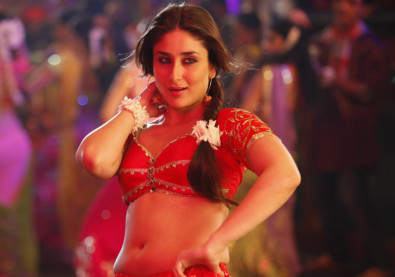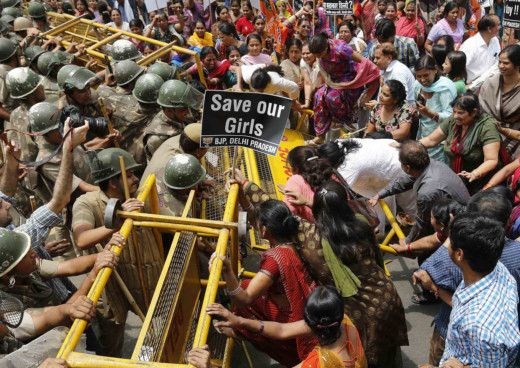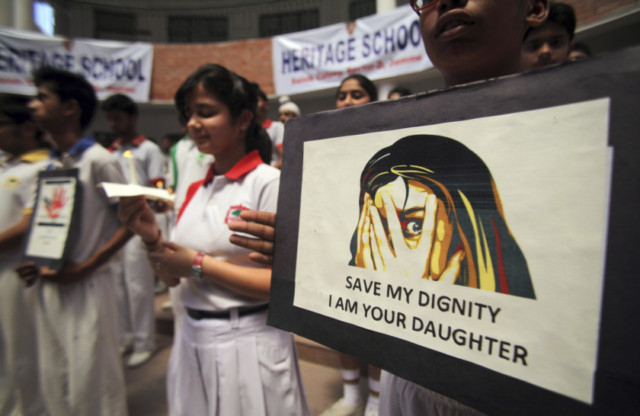
NEW DELHI: The lights dimmed, and the audience fell silent as a montage of movie scenes showed women dancing in skimpy clothing or being verbally abused, slapped, leered at, pawed, tied and raped.
The scenes had been cut out of movies, deemed inappropriate by government censors. But they were screened for the first time last weekend in New Delhi during a three-day workshop called “Cut-Uncut,” which was part of a festival celebrating 100 years of Indian cinema.
India has the world’s largest film industry, with more than 1,100 movies produced every year. These scenes of gratuitous violence, sex and titillation were followed by panel discussions on issues of censorship and certification with an audience of 600 people. The three-day session included scenes that contained kissing, sex, violence, and politically controversial content.
It is somewhat odd that the government that cut the scenes is now screening them. But the depiction of women in the movies, especially in lewd and bawdy dances, has become an issue in recent times, particularly after the national outcry sparked by the horrific gang rape of a young woman in New Delhi in December.
As angry Indians protested on the streets against the rising incidents of sexual assaults and held unprecedented public conversations about socially taboo topics, the movies were caught in the middle.
Many activists accused filmmakers of showing women in regressive roles and India’s censor board of poor gate-keeping. The filmmakers, in turn, said that censors were stifling their freedom and that their movies were made for entertainment.
“We want this show to speak to the ongoing debate in our society and tell people that we are not a bunch of scissor-happy officers chopping off scenes, but we are very sensitive to women’s interests,” said Pankaja Thakur, the chief executive of the government’s Central Board of Film Certification.
“After 100 years, I think we are ready to view these censored scenes and have this conversation. We hope this will help bridge the gap between society, [the] censor board and the film industry.”
Until the mid-1990s, Indian sensibilities were so squeamish that movies would mask kissing couples with images of two flowers or swans coming together. But now, some say, the movies have swung to the other extreme.
Activists have criticised what has come to be called “item songs,” which are popular, titillating dance sequences showing women gyrating to songs with sexually suggestive lyrics. Censor officials want to certify an entire movie as “adults only” if it has such songs in it, but moviemakers have fought bitterly, with varying results.
That debate and the anxiety over the growing incidents of rapes played out at the festival, where some item songs also were screened.
People walked past posters of movie classics to a hall tucked away at the back to watch the censored scenes.
“For adults only,” said a sign outside the hall. After the screening, a shouting match followed.
“If somebody provokes us by wearing less clothes, what do we do?” a middle-aged man in the audience asked the panel of filmmakers, activists and censor officials.
“If our movies offend you, stop watching them, it is a democracy,” said Ekta Kapoor, a powerful female producer in Bollywood. “Don’t ask us to cover up and lock up the women. Change your mentality.”
Many young people in the hall cheered.
Movie director Luv Ranjan told the audience to “stop blaming cinema for every social evil” and added, “Bring me signed letters from 1.2 billion Indians about the length of the women’s skirts they desire, and I will adhere to it.”
Women’s rights activists countered them.
“In the context of so many rape incidents, we must ensure that our films do not show vulgarity and demean women,” said Nirmala Sawant Prabhavalkar, a member of the National Commission for Women. “There is a definite thread that links all these songs to the incidents happening around us.”
In March, the censor board responded to the demonstrations and said it will scrutinise item songs more closely before certifying a film.
But what has added to the discomfort of many families is that these dance numbers are featured not only in movies, but also on music video and entertainment channels on television. And when the movies are a few months old, its producers buy satellite TV telecast rights.
“It is hugely problematic these dance numbers from movies are carpet-bombing young impressionable viewers on music and entertainment channels,” Shubhra Gupta, a film critic, said at the event. She said the TV music channels do not follow an age-appropriate rating system.
In many ways, the debate after the screening reflected India’s inability to explain the rising assaults on women or fix responsibility for the malaise of misogyny.
In the past few months, police officers, politicians, community leaders and spiritual gurus have frequently blamed modern urban lifestyles and women themselves for the rise in attacks. They have attacked women’s clothing, women venturing out after sunset, cellphones, television and even sex education in schools.
Some in the audience said Indians are unable to deal with the social transition under way, brought about by urban boom, economic prosperity, globalisation and access to easy communication.
— Washington Post














